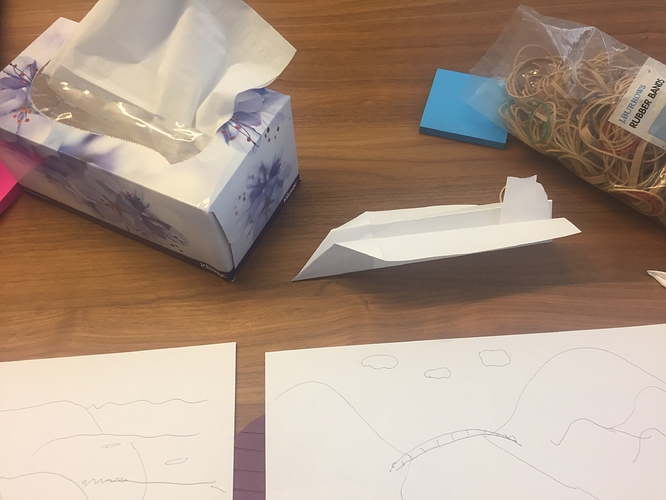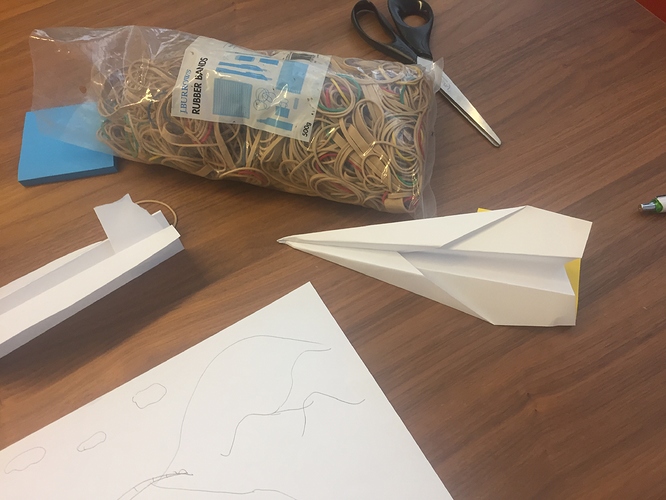Waste #2 The waste of extra features.
The plane game
I’ll admit, I like getting adults making paper planes as it is always fun and engineers are right up there on the scale.
The Set Up
Two people are given a few sheets of paper. The rules are spelled out to both:
- Minimum number of folds to make the paper plane
- Each prototype needs to be approved before testing and release
- The next prototype can add more complexity if needed
- The plane will be considered flight ready when it can fly at least the length of the table (about 2.5 meters).
- The front of the plane must have a nose cone (pointy bit)
Round 1
Both teams will make a plane (5 folds). I accept one plane as ready to test, but the other, I state that it needs to have a more pointy nose. “Let’s do another sprint”.
Round 2
The tested plane doesn’t reach the end of the table, so they add 2 more folds to the prototype. As does the second team. I accept one plane (the one that was previously tested), but reject the second as it really needs a tail.
On testing the first team with the accepted plane meets the spec and is accepted as done
Round 3
Reject it with the need for fins on the wings
Round 4
Reject it with it needing skids (feet) to land on. At this point I provided some masking tape.
Round 5
Reject it as it “looks plain” (no pun, not intended) and get them to add them.
Round 6
I relent and let them test it. The plane flies straight into the table
Pulling it back to the point at hand. We look at the differences. The “features” really didn’t add value and there was also a cost in time as we went through a lot of work before even reaching a test phase.
The exercise ran quite well.
From an improvement perspective, I would consider getting team 1 to continue “producing planes” with minor improvements aimed at experimentation and maximizing flight time. So that way we can also see the additional waste of not being able to iterate whilst the “features” were in development for team 2.
All in all a good exercise





